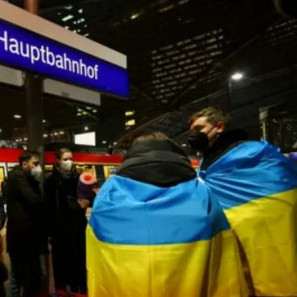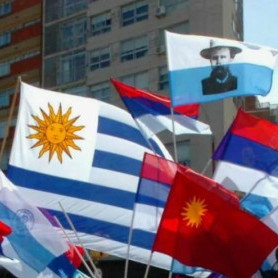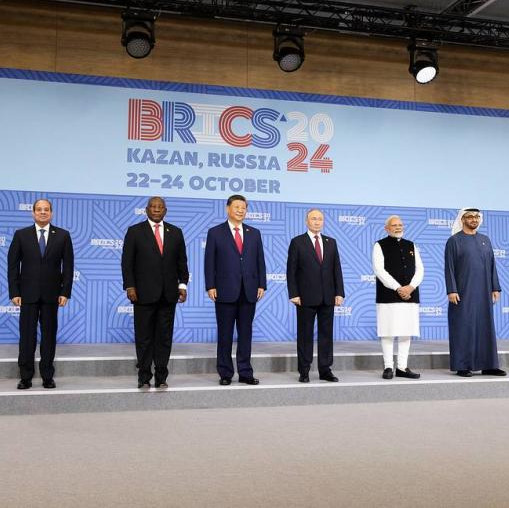What is this system and why does it deserve such scrutiny? This system is equipped with a missile that makes it unique among systems produced by the third world countries. But we’ll get to it.
In 1996, a group of Syrian missile experts spent two weeks in North Korea. In August 1996, North Korea received from Syria a 9M79 (SS21) missile. This is a solid-fuel one-step guided missile with an inseparable warhead used in the Tochka missile system. The range of the missile is 15-70 km. The system was meant to replace 9K52 Luna M and put into service in the Soviet Army in 1976. Similar systems were supplied to Syria in the 1980s.
The system is designed to destroy nuclear targets, starting and shooting positions of missiles and artillery, mechanized infantry and armor units, aerodromes, control centers, communications centers and other pinpoint and small-sized targets deep in the enemy forces.
The difference of these missiles from previous missile systems, such as different modifications of Luna, is that their flight is guided not by setting the time for the engine’s operation and the initial launch angle, but with the help of aerodynamic elements – wings and steers.
Aerodynamic steers have gas dynamic doubles installed at the exit of the jet engine’s muzzle. All of these elements not only adjust the ballistic trajectory, but even direct it at the final stage. Gas dynamic steers control the missile at the initial part of the trajectory, when the flight speed is low and aerodynamic steers are not efficient enough. The control system is inertial with the onboard computer. This made the missile very accurate: its calculated deviation from the target when shooting for the maximum range (70 km) was 150 m, while the deviation of 9K52 Luna M was 1,200-2,000 m for the same range.
In 1989, the Soviet Union put into service an improved version of Tochka, 9K79 (the 9M79M 1 missile has a range of 20-120km and a deviation of 75 m for a 120 km range), but these missiles were not supplied to Syria and, consequently, did not make it to North Korea. However, Koreans managed to develop an analogue based on the previous version: according to test estimates, the range of KN-02 is 120 km.
The first test held in April 2005 was a failure, but May of the same year saw a successful launch, when the missile traveled over 100 km. Another two launches were registered in March 2006. There is almost no information about the missile’s control system, but given the current availability of GPS, the precision of missiles using the necessary units and software can reach 15 m. Even without satellite navigation and with an accuracy of 200-300 m, using a cased warhead in different modifications, a missile will be able to effectively destroy different targets. This is what it was created for.
The role that a missile with a 120-km range can play in the military-political developments on the Korean Peninsula deserves a separate description. After the Korean war, the front line between the North and South forces became the demarcation line. There is a demilitarized zone that stretches 2 km in both directions from the demarcation line. This 248kmx4km zone has almost no economic activity. It lies just 40 km off the Seoul suburbs and 62 km off its center. Significant parts of both Korean armies is concentrated in areas adjacent to the demilitarized zone. In South Korea, it is called the Border District, which takes up 7% of the country’s territory. The district is divided into two lines, the external (closer to the border) and internal (farther from the border). The external line is 10-25 km wide and the internal is approximately 25 km wide. So all of the district is within KN-02’s shooting range, and there is no doubt that there will be enough targets for it there. Given South Korea’s geography and border line, the KN-02 tactic missile can be classified as strategic.
The missile uses sold fuel, which means it is always on high-alert and needs little time for pre-start preparation, making the system highly mobile. This makes it harder for an enemy to destroy. Besides, at the early stage of the war South Korea will have a lot of headache not only from missiles, but also from thousands of artillery units along the demilitarized zone. North Korea has several safe underground shelters per each missile system, as well as a network of underground communications and even roads which it constructed with enviable intensity.
Given the specifics of the rough North Korean landscape along the demilitarized zone, it is worth recalling Kosovo, where Serbs lost just 13 tanks, 6 armored combat vehicles, 8 artillery units and 19 anti-aircraft guns during 78-day air strikes during the 1999 war. Later they withdrew from the small Kosovo 220 tanks, 300 armored combat vehicles, 308 artillery units and hundreds of trucks. Similar trucks, but armed with missiles, can easily hide somewhere in North Korea, as both the landscape and engineering facilities allow doing it.
Yet it is not too easy to destroy a missile launcher even in a desert terrain. During the Iraqi Freedom operation in 2003 Americans failed to destroy all of the Iraqi units. They eliminated 11 out of 15 Ababil 100 missile systems and 7 out of 11 Al-Samud II systems, while the rest was found only after Baghdad had been taken. Iraqis, by the way, managed to launch 13 missiles.
Air interception is even more difficult. In 2003, it proved impossible to intercept all the missiles targeting Kuwait. According to some estimates, a total of six missiles were not intercepted. There is something to think about, given the tiny intensity of these single launches. As to North Korea, it has adopted a concept of massive missile strikes to inflict maximum damage as soon as possible and to overcome anti-missile defense; to put it simply, its main goal is to overwhelm enemy defenses. It should be noted that anti-missile defense systems have not yet deserved praise for resisting non-single launches. During the missile test of July 5, 2006, U.S. and Japanese warships equipped with a missile monitoring system and located in the Japanese detected and calculated the trajectory of only the 2nd, 4th, 5th and 7th out of the seven missiles launched by North Korea. The flight of three of them, including Taepodong 2, remained undetected.
Most importantly, KN-02 is a guided system. An ordinary ballistic missile follows a ballistic curve by inertia like an artillery shell after its engine turns off and is relatively easy to intercept if the launch parameters are known. KN-02, however, is controlled by aerodynamic elements and changes the attack angle before striking the target. This makes it suitable for further modernization in terms of better maneuvering, changes of flight algorithms, etc., which can make it little vulnerable to the existing anti-missiles.
These considerations lead to a conclusion that North Korea’s Tochka has a great future, even on the weapons market, where its products enjoy a stable demand. KN-02 will get a good place along Skad and Nodong, which has already become classic. Moreover, it can be equipped with a TV self-guided image-identifying warhead, integrated with automated control systems, reconnaissance systems like pilotless aircraft, etc. These broad possibilities will be undoubtedly welcomed by buyers. But the missile will also have a prominent role in the North Korean arsenal as well. It seems that opponents of the North Korean commander-in-chief, Kim Jong-Il, should start thinking of some uncommon countermeasures.









